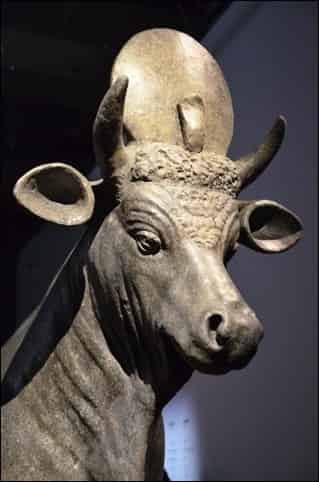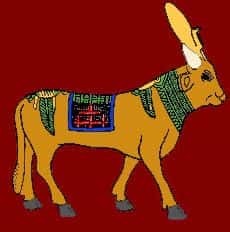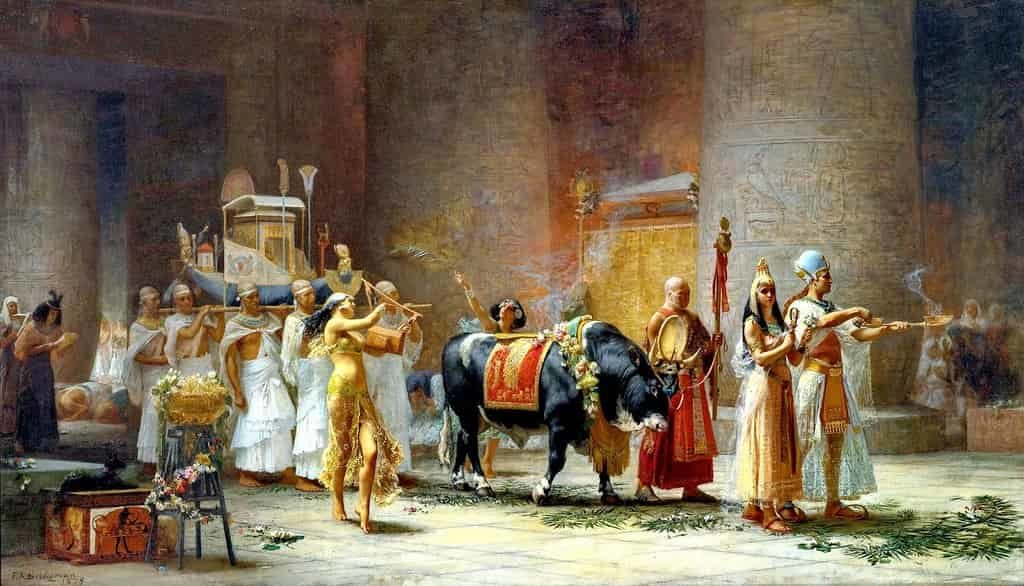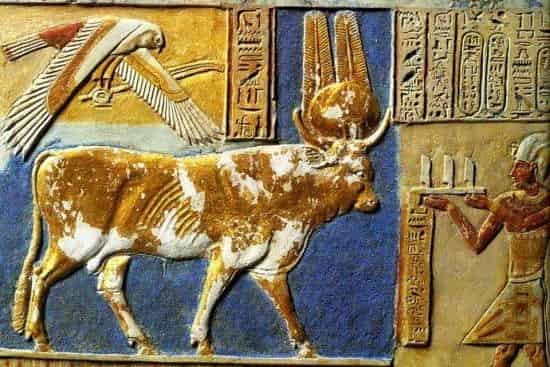What is Apis the god of?
Apis originally emerged as a fertility god , but over time the ancient Egyptians incorporated him into their religion as a funeral deity.
Apis: Ancient Egyptian god who represented the manifestation in the land of the god Ptah and in Memphis was called “Spring of Ptah”. It was a symbol of soil fertility and germinating power.
Apis was represented as a bull, or with a human body and a bullfighting head. Like all solar deities, he always carried a solar disk between his horns.
Although we know him as Apis, this is actually the name by which the Greeks called it. The Egyptians, on the other hand, knew him as Hap or Hapis.
According to the myth of his birth, he was fertilized by a ray of sunlight on the goddess Isis, who was associated with the cow.
Apis in ancient Egyptian religion
Bull God worshiped from the Early Dynastic in Memphis. Originally he was a form of the Nile god Hapi, and fertility god related to the spread of flocks of sheep and herds of cows.
He is also related to the Sun god, so he carried between his horns the solar disk and, sometimes, the Uraeus. From the New Kingdom he was linked to the god Ptah, he was also linked to Osiris.
He was a symbol of the fertility of the soil and of the germinative and procreative power. According to a legend, he was generated thanks to a ray of sunlight that fertilized a cow, a mammal that personified Isis.
He lived in the stables of the temple at Memphis and was provided with a harem of sacred cows.
In the Late Period Apis became the god of the dead, taking the deceased to the grave, helping and protecting him so that he could control the four winds of the Hereafter.
Not all bulls could be worshiped as Apis, they had to have 29 special marks, although the most important were two spots, one in the form of a eagle, on the back, and the other, in the form of a beetle, on the tongue; others are the legs of white color, like its belly; the tail must have double hairs and be split in two; on the forehead it should have a white spot in the shape of a triangle or a diamond.
In the New Kingdom, at his death he was embalmed and buried in the serapeum of saqqara; his mother was also buried with him. In any case, the bull could not live more than 25 years. If he reached this age he was drowned.
Ammianus Marcellinus, Greek historian at the end of the 4th century AD, relates that the bull must always die by drowning, since as a god he was he could not die a natural death.
When the bull died, the Ptah priest was in charge of locating another that met the requirements. His funeral trousseau consisted of small cow-shaped ushabtis.










